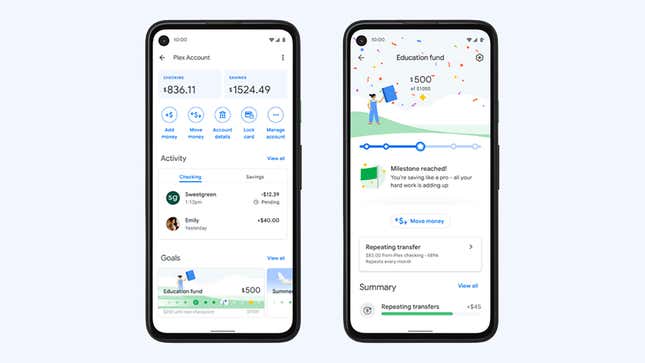
In April, the old Google Pay app is losing its key functionality, which means you’ll need to move over to the new Google Pay app before then to carry on using the service. Confused yet? If you’re not sure which app you’re on, or what the difference is, here’s what’s happening.
A brief history of Google Pay

The latest version of Google Pay was announced back in November for U.S. users. The new app is based on the Tez software that Google originally developed in India, and it has a much more modern and social feel, with a focus on the people and businesses you interact with most, rather than just a standard list of transactions with names and figures.
The new app replaces the old Google Pay app, which launched in January 2018 in the U.S. as a merger between Android Pay and Google Wallet—the former was Google’s app for paying for stuff with a tap of your phone, and the latter was Google’s app for paying other people and buying stuff on the web. The original Google Pay brought all that functionality into one app.
Let’s backtrack even further. Google Wallet launched in 2011 as a way to pay for stuff online and in-store. It even came with a physical card you could use like a debit or credit card. Android Pay launched in 2015, building on that functionality. It arrived after Apple Pay and Samsung Pay as a way of making payments without any cards or cash, though at the time it could only make payments in stores and through a select number of apps. At launch, Android Pay worked in around 700,000 different stores, and could be used with Visa, AmEx, Discover and MasterCard accounts.
But none of that matters now. There’s a new app, and funnily enough, it has the same name as the old app.
The new Google Pay app

You may have noticed that both mobile payments and digital banking are changing a lot with each passing year, and the brand new Google Pay app is designed to reflect that. It’s no longer just for replacing your credit card or cash when you pay for stuff in stores, it wants to be at the center of all your financial transactions.
That means simple and straightforward peer-to-peer payments arranged as conversations (Venmo, anyone?), quick access to the companies you interact with most often, special offers and discounts, an analysis of your spending and payments over time, easy options for splitting bills, and so on. Google has put together a detailed look of what’s new and what’s coming here.
Peer-to-peer payments are going to be front and center in the new Google Pay, but you can still do the same tap-to-pay trick in stores as you did before. Not everything in the updated Google Pay app is new, but it’s all been redesigned and rearranged to be more intuitive, and Google is using artificial intelligence for some features, like spending breakdowns.
Later this year, Google is also going to be launching what it calls Plex accounts, which will be offered in partnership with 11 banks. While the banks themselves will still own and run the accounts, the new and improved Google Pay app will be the primary way of managing them and making payments. There will be no monthly account fees, minimum balance requirements, or overdrafts, and Google is promising AI-powered advice and insights to help customers save money.
What you need to do

On April 5, the old Google Pay app is losing the ability to make peer-to-peer payments, and you won’t be able to view your transaction history in the app either. It’s not going to be completely useless on April 6 though—it will still stay connected to your cards, so you’re still going to be able to use it to make payments in physical stores.
So what do you need to do? In short, move over to the new app, which should handle the migration for you. If you’re still on the old Google Pay app (Android, iOS), then install and sign into the new Google Pay app (Android, iOS). Note though that the new app can only be installed and enabled on one device at a time, which might affect how you decide to switch over to it.
According to 9to5Google, you can get your balance out of the old Google Pay app by switching to the new one or by contacting Google through its official support channels. An update to the Google Pay terms of service is happening at the same time, which increases the minimum age for Google Pay users from 16 to 18.
If you’re reading this from outside the U.S., don’t panic: The new Google Pay experience hasn’t arrived in your country, so you don’t need to do anything just yet. As with Android Pay and the original Google Pay before it, the improved Google Pay app will slowly get rolled out to other regions around the world once it’s established in the U.S.
(Updated 3/4/22 with new details)